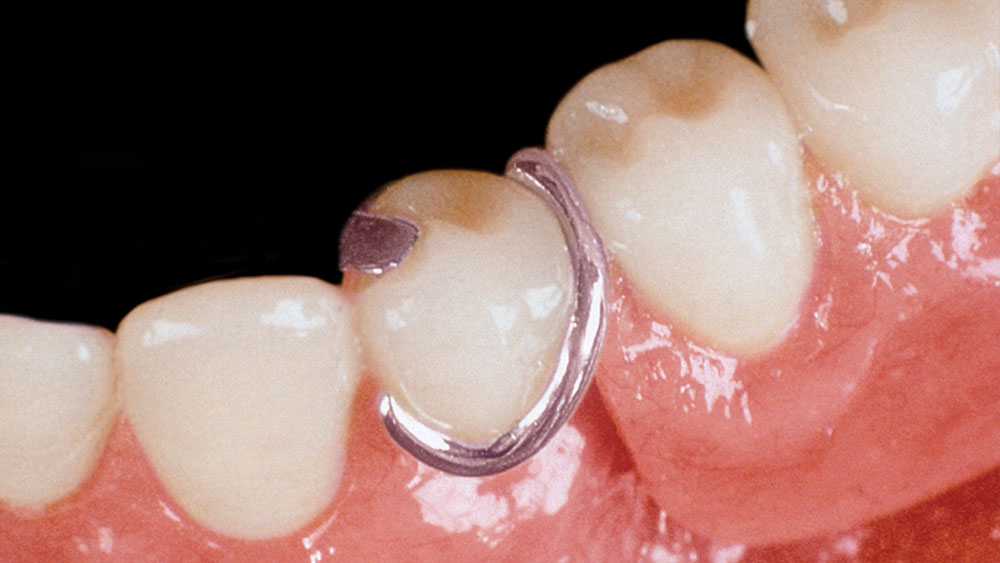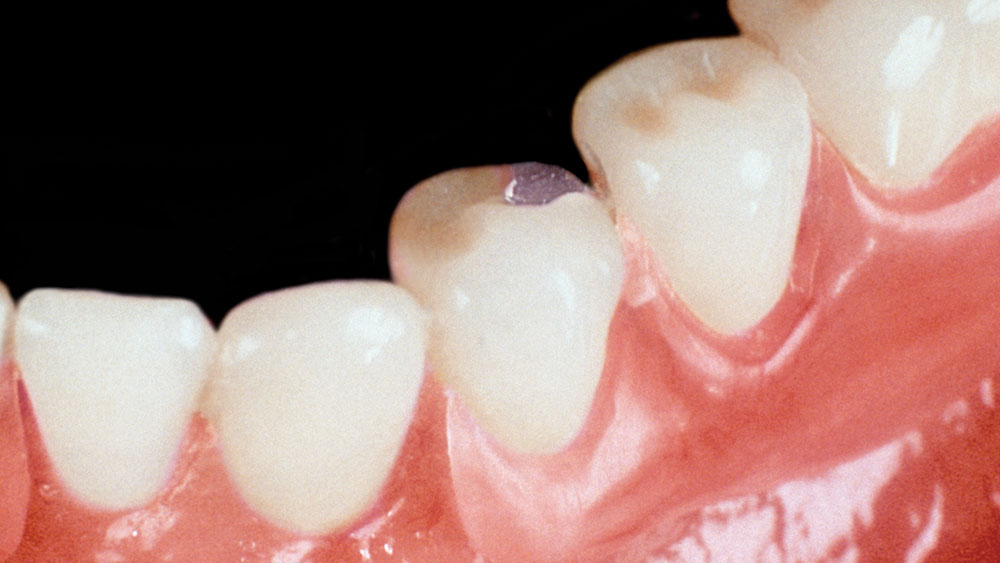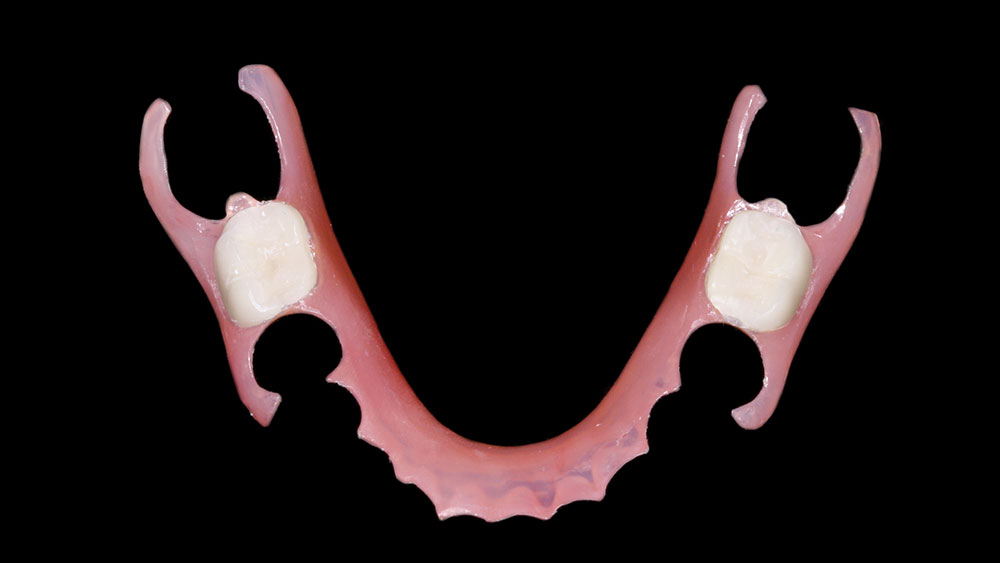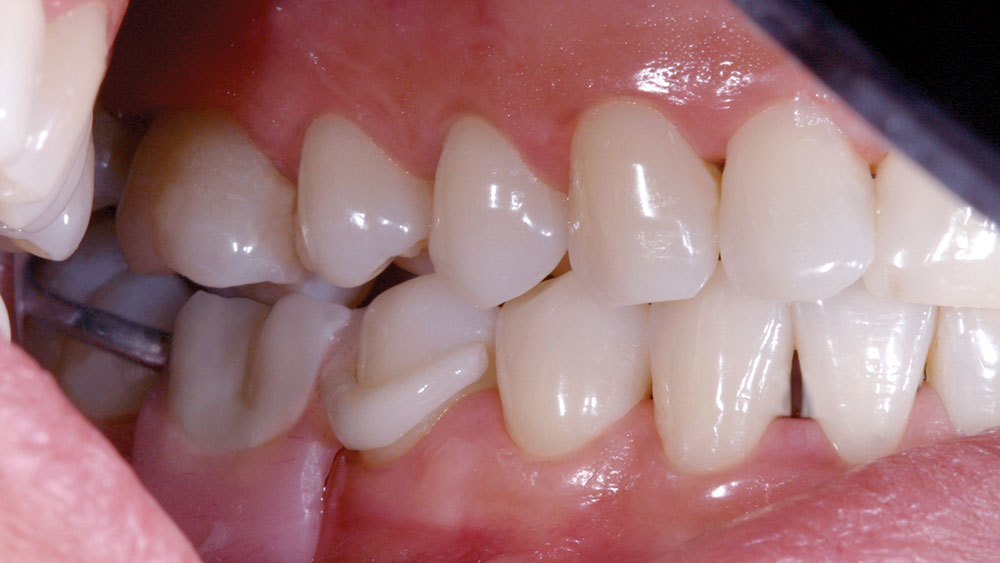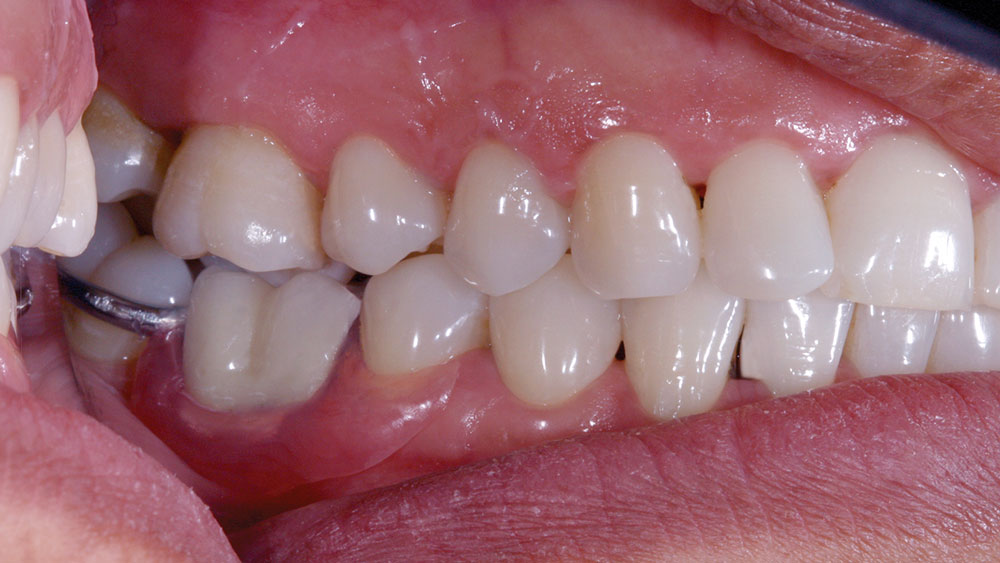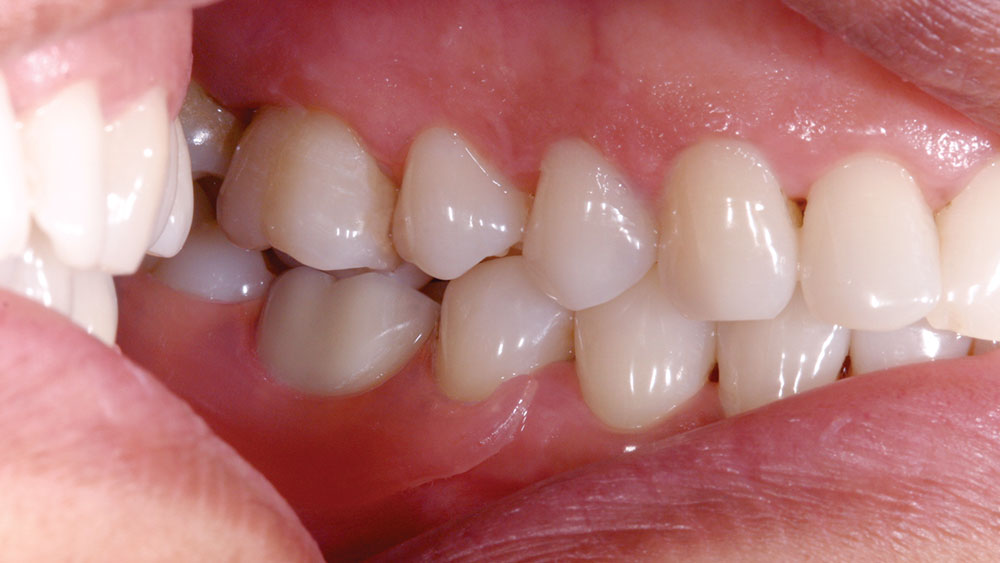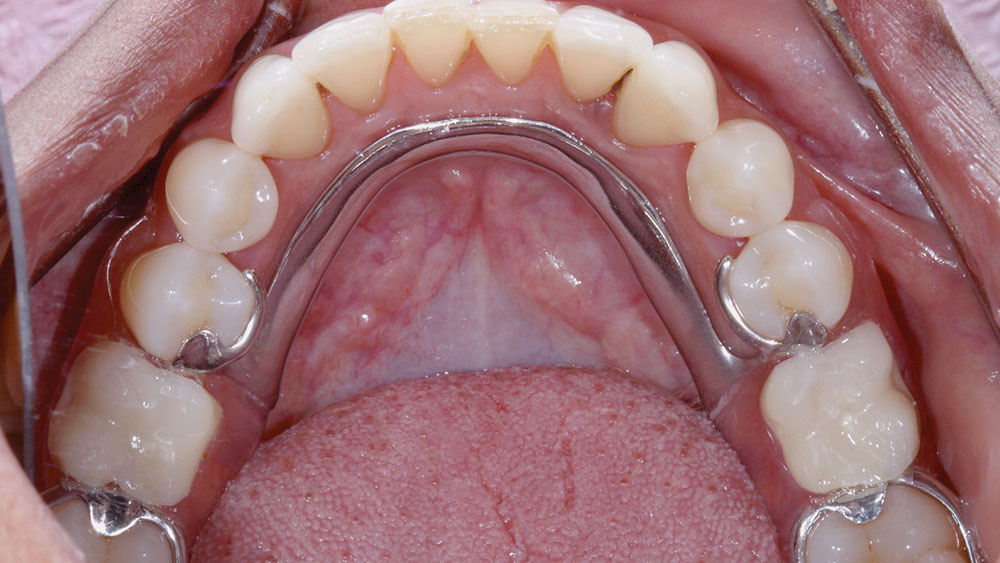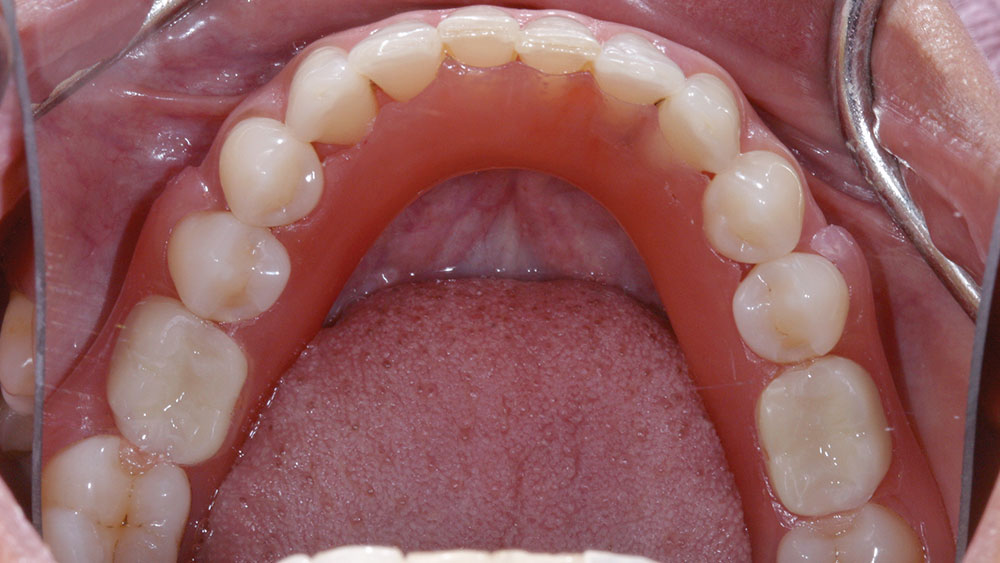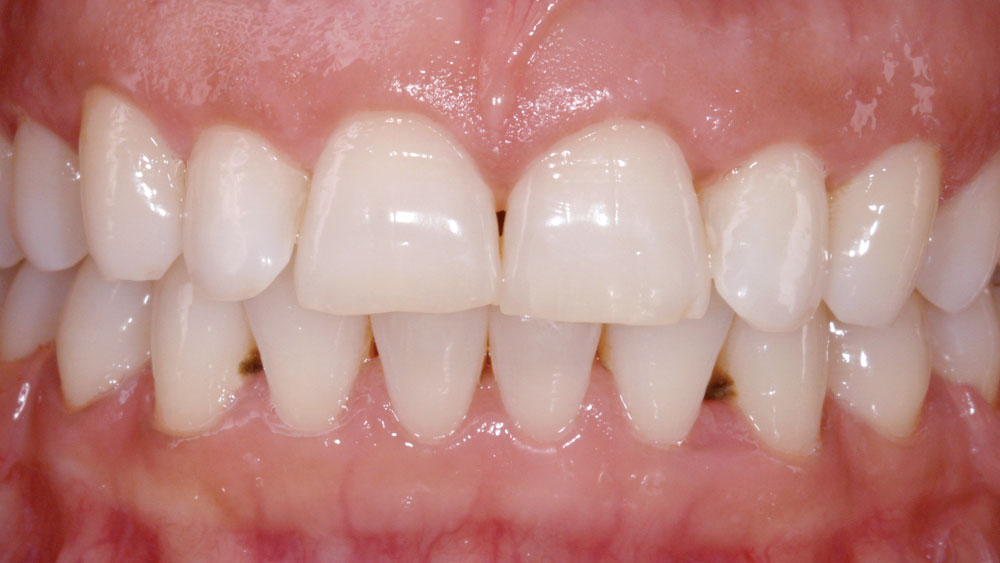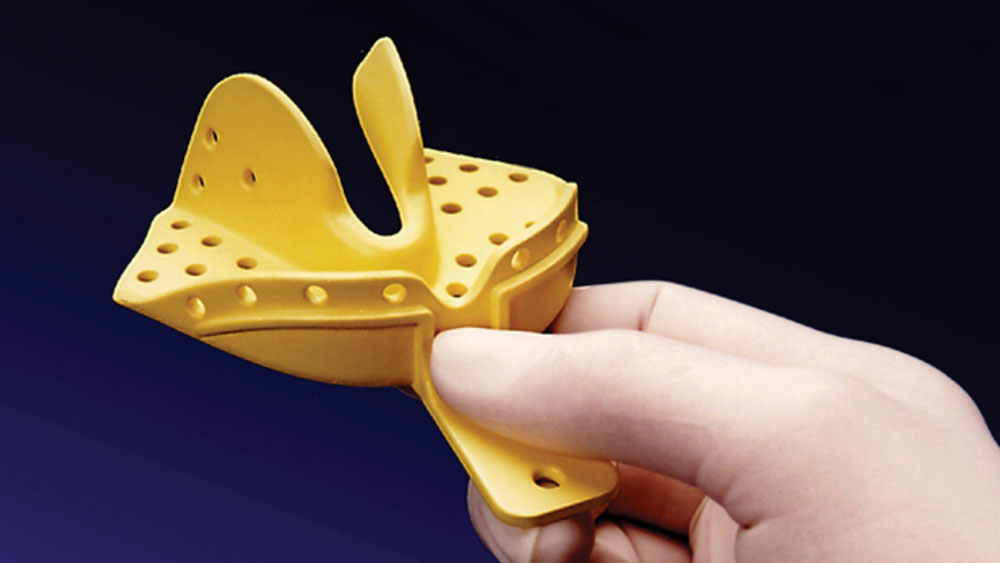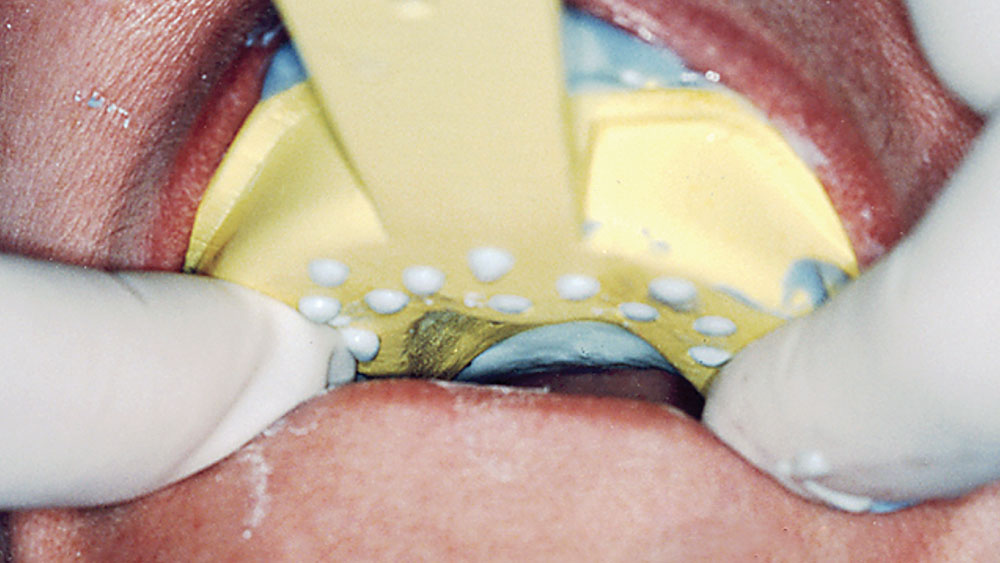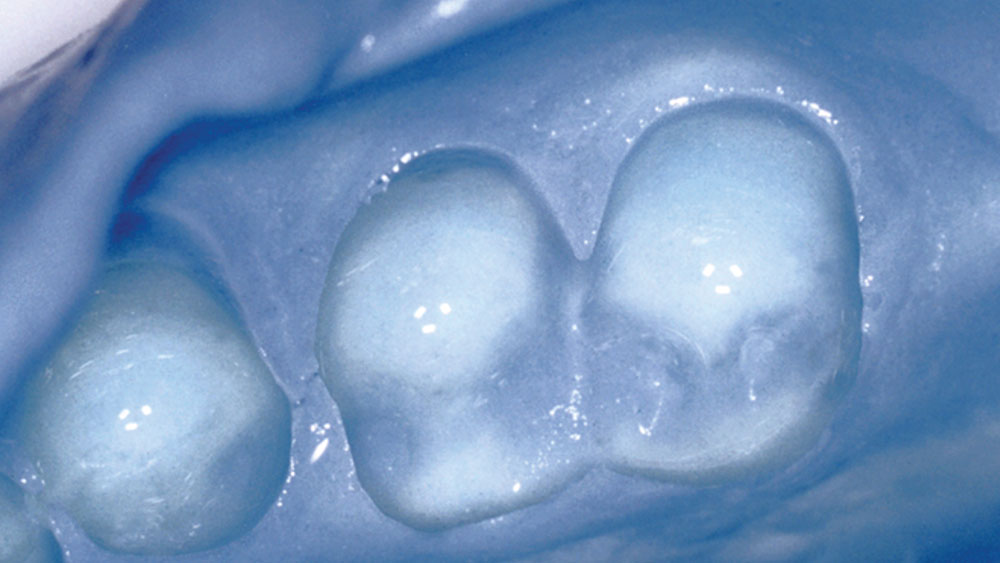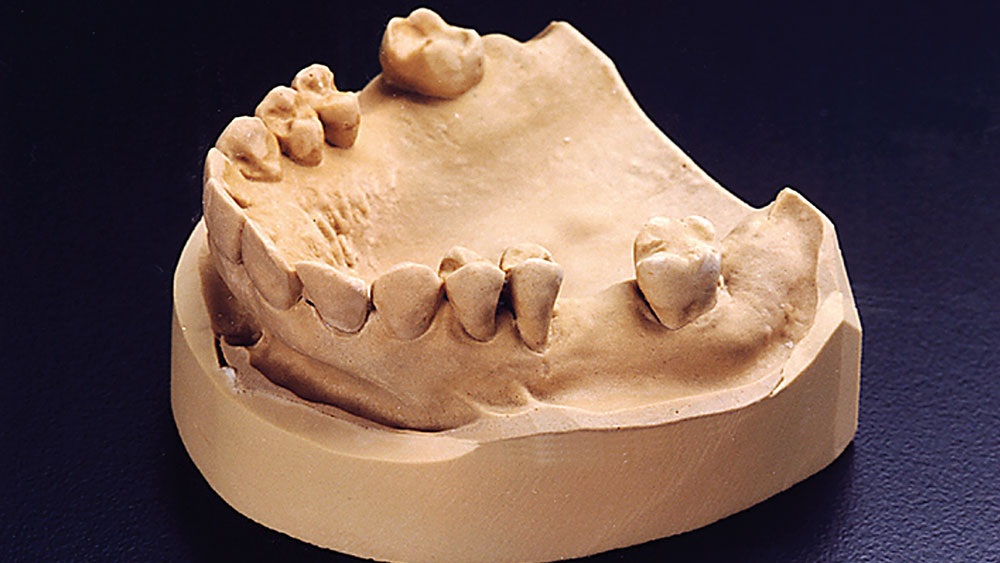Valplast Clinical Indications
Upon entering private practice, many of us learned that patients would sometimes simply refuse to wear unesthetic partials. In those early days I cut off more I-bars than I care to remember and had to replace them with a soldered clasp that would not work as well, but could not be seen from 50 feet when the patient smiled. With the rapid advances in esthetic materials and techniques in the fixed prosthodontic arena, it is no wonder that patients requiring removable prostheses are also expecting us to achieve esthetic results when replacing their missing teeth (Figs. 1, 2). Partially or fully edentulous patients comprise nearly half of the aging population, and this group is projected to triple in the next few years. This ensures that removable prosthodontics will continue to be part of the general dentist’s restorative practice for decades to come.
Like many other topics in dental school, removable partial dentures were taught to most of us in a rather dogmatic fashion. Design and function were stressed, as they should be, but for the most part esthetic issues were ignored. Rather conspicuous clasps, such as I-bars, were placed on maxillary cuspids without a lot of thought given to how this would affect the patient’s opinion and confidence in the prostheses (Fig. 3).
Indications
- Complete Valplast® Partial Dentures without metal.
- Combination Vitallium 2000® and Valplast Partial Dentures.
- Unilateral Valplast Partial Denture, with or without metal.
Contraindications
The many benefits of Valplast notwithstanding, there are some specific contraindications that are better served with a traditional cast metal partial denture. For example:
- If there is less than 4 mm (all Valplast) or 6 mm (Vitallium/Valplast) of interocclusal space in the posterior area.
- If there are bilateral free-end distal extensions with knife-edge ridges or lingual tori on the mandible.
- If there is bilateral free-end distal extension on the maxilla with extreme atrophy of the alveolar ridges.
- Deep overbite cases (4 mm or more) where anterior teeth can dislodge in excursive movements.
I recently treated a patient who was missing her two lower first molars. She did not want to have implants placed, and neither of us liked the idea of preparing the two virgin teeth on either side of her edentulous spaces. Therefore, it was decided that a removable partial denture would best fit her needs. For illustration purposes in this article, three esthetic partial dentures were fabricated: a cast Vitallium 2000 frame with Thermoflex™ clasps (Figs. 4, 7), a cast frame with Valplast clasps (Figs. 5, 8), and a full Valplast partial (Figs. 6, 9). Pictures were taken with each of these partials in place to show the esthetic characteristics of each (Figs. 7–9). Each partial denture is also shown from an occlusal view to show the adaptation of the major connector to the tissue (Figs. 10, 11). For cases where a cast frame is necessary or desirable, most dentists are unaware that Thermoflex and Valplast clasps can be used as shown in the preceding figures. For cases where cast frames are not necessary, Valplast partials are the clear esthetic winner. In a fully retracted facial view of the preceding case (Fig. 12), it is apparent that a Valplast partial is impossible to beat for esthetics.
For first-time partial wearers in particular, there is no better partial denture available in most cases than Valplast. Since its introduction in the 1950s, Valplast has been satisfying both dentists and patients as a more esthetic, yet fully functional, alternative to traditional cast metal based removable partial dentures. Valplast is a flexible base resin ideal for partial dentures or unilateral restorations. The biocompatible nylon and thermoplastic resin of Valplast provide an ideal degree of flexibility and stability when processed and finished to the recommended thickness.
Additionally, the color, shape and design of Valplast partials blend seamlessly with the natural appearance of the gingival tissues, making the prosthesis nearly invisible. The strong, durable clasps snap securely and comfortably into place around the existing natural dentition and gingival. Since the strength of the Valplast resin does not require a metal framework, it eliminates the metallic taste that many patients complain about. It also enables the partial to be fabricated thin enough with the partial to be fabricated thin enough with nonmetal clasps. This avoids the uncomfortable feeling often associated with traditional, nonesthetic metal partials.
With Valplast partials, it is necessary to ensure there is adequate occlusal clearance between the arches for tooth placement. Unlike traditional acrylic partials that achieve a chemical bond between the teeth and the denture base, Valplast relies solely on mechanical retention to retain the teeth. If there is not enough room to place retention holes in the teeth, they can become displaced over time. A good rule of thumb is 5 mm or more of posterior interocclusal clearance between the teeth and the opposing ridge to maximize tooth retention.
Unlike traditional metal-based partial dentures, there is little or no tooth preparation necessary to fabricate a Valplast partial. Sometimes composite is used to create a more ideal clasp location or enamelplasia to parallel guide planes for an easy path of insertion and delivery. Our partial design technicians can provide you with designs that will clearly identify areas of preparation and provide options for use of metal.
One of the attractive aspects of Valplast partials is they can be constructed from two good impressions or models, an accurate bite relationship and desired shade. A good alginate impression, like Accu-Dent® from Ivoclar Vivadent, is ideal for full and partial denture cases.
The Accu-Dent system includes specially designed impression trays (Fig. 13), and a unique delivery syringe (Fig. 14). Accu-Dent alginate has been custom formulated with a two-viscosity system (Fig. 15). The tray gel has a very heavy viscosity, giving it the necessary body to reach into the sulcular areas without slumping. The syringe gel has less viscosity and, therefore, is capable of accurately recording the tissue surface (Fig. 16). Irreversible hydrocolloid is still the best material to take moist tissue impressions due to the hydrophilic (attracted to water) nature of this material. Polyvinyl siloxane and polyether impressions are also acceptable impressions for Valplast. As with nearly all impression techniques, the use of a custom tray is highly recommended.
With accurate master models, technicians can focus on the survey and design for ideal Valplast clasp positioning, taking advantage of natural undercuts (Fig. 17). For distal extension cases, it is imperative to have either wax bite rims that were used to verify occlusal dimension and a bite registration for the patient, or a wax set-up try-in. Although you will need to take a tooth shade to match the natural dentition, the Valplast material is translucent and will blend in with the surrounding gingival. Valplast is also available in a meharry shade for matching ethnic shades.
While it is recommended to do a wax set-up and try-in during Valplast partial construction for anterior or free-end saddle cases, most dentists prefer to go straight to finish on these partials. Since the material is thermoplastic in nature, you can and should place the Valplast partial in warm water for a couple of minutes prior to placing in the patient’s mouth. This allows the material to shape itself to fit the patient’s specific anatomy. As the Valplast material cools, it will harden in this new shape, something that other partial dentures cannot do. This is why postoperative sore spot adjustments are reduced or eliminated with Valplast.
If necessary, adjustments can be made to the Valplast material in your office, and due to the nature of the material, these adjustments are better made with either stones or rubber points. Rubber points and wheels will provide you with the smoothest surface, especially if you are adjusting the peripheral edges of the restoration. An adjustment kit with the recommended points, wheels and a separate concentrated cleaner specifically for Valplast is available. Denture cleaners are not recommended for Valplast (see valplast.com).
To contact Dr. Michael DiTolla, call 888-303-4221 or email mditolla@glidewelldental.com.
Thermoflex is a trademark of DENTSPLY Austenal (York, Pa.).
Accu-Dent is a registered trademark of Ivoclar Vivadent (Amherst, N.Y.).
Valplast is a registered trademark of Valplast International Corporation (Long Island City, N.Y.).
Vitallium 2000 is a registered trademark of DENTSPLY Austenal.



